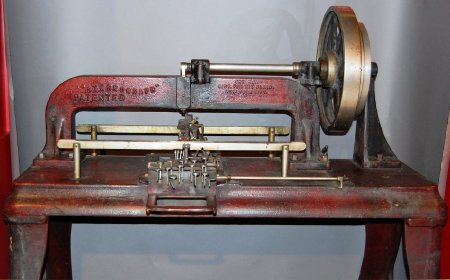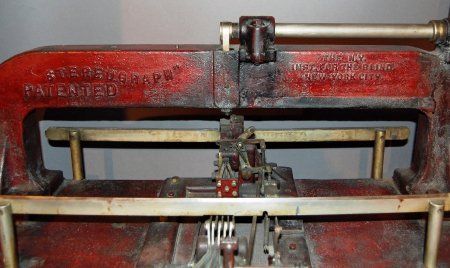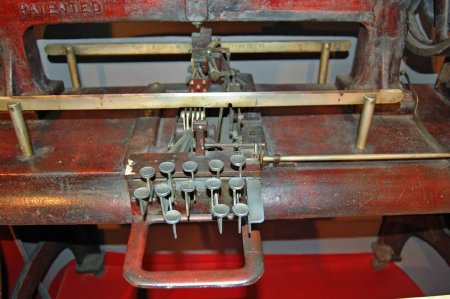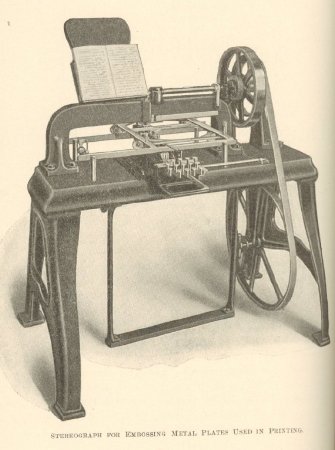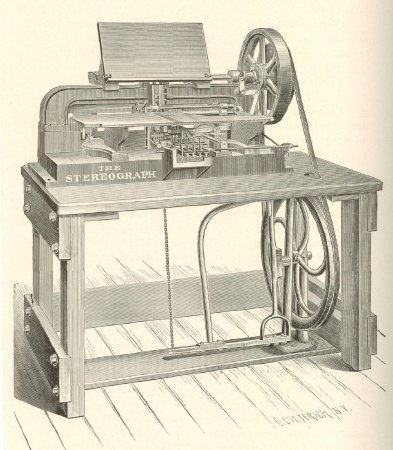Object ID:
2010.1
Title:
New York Point Stereograph
Description:
Heavy cast iron table with molded apron, overall enameled unevenly with several coats of dark red paint; two cast leg pieces, each with two feet which gently curve outwards to steel casters, bolted to base of table; heavy cast U-shaped arch, hollow, bolted to back of table, bar supports the drive shaft and embossing piston, as well as one bearing for flywheel and upper belt pulley , the other bearing is mounted in a flying buttress-like bar on right side of table; embossing piston is connected to the drive shaft by an eccentric cam; cast into U-shaped bar, "STEREOGRAPH PATENTED THE N.Y. INST. FOR THE BLIND. NEW YORK CITY."; complicated mechanical keyboard unit bolted in middle of table, fifteen aluminum keys with rounded pads above steel wrist rest, die-box positioned at back of keyboard unit beneath the U-shaped arch; two bright-steel blade-like carriage rests on round posts, one spans middle of keyboard, the other is immediately behind it; threaded hole at front right apron, threaded hole on top left of U-shaped arch; note that missing treadle and lower belt pulley suggest this machine had been converted for use with overhead power transmission.
Dimensions:
H-51.5 W-47 D-28 inches
Date:
ca. 1899
Made by:
New York, NY
Place of Origin:
New York, NY
Provenance:
William Wait, inventor of the New York Point system, a competitor with line letter and braille in the controversy over a uniform system of reading and writing for blind students, introduced his mechanical pointwriter, the Kleidograph, and a point stereograph machine in 1894. Both were a response to the invention of similar machines for the braille system in 1892 by Frank Hall, superintendent at the Illinois School for the Blind. APH purchased six New York Point stereotype machines from the New York Institute in 1898. Production of new titles in New York Point immediately doubled as the stereotype machines dramatically decreased the time and cost of preparing embossing plates. APH did not buy one of Hall's braille stereotype machines until 1906. Operating instructions from 1899 in multimedia links (pdf).
Credit Line:
Gift of New York Institute for Special Education, 2010.1
